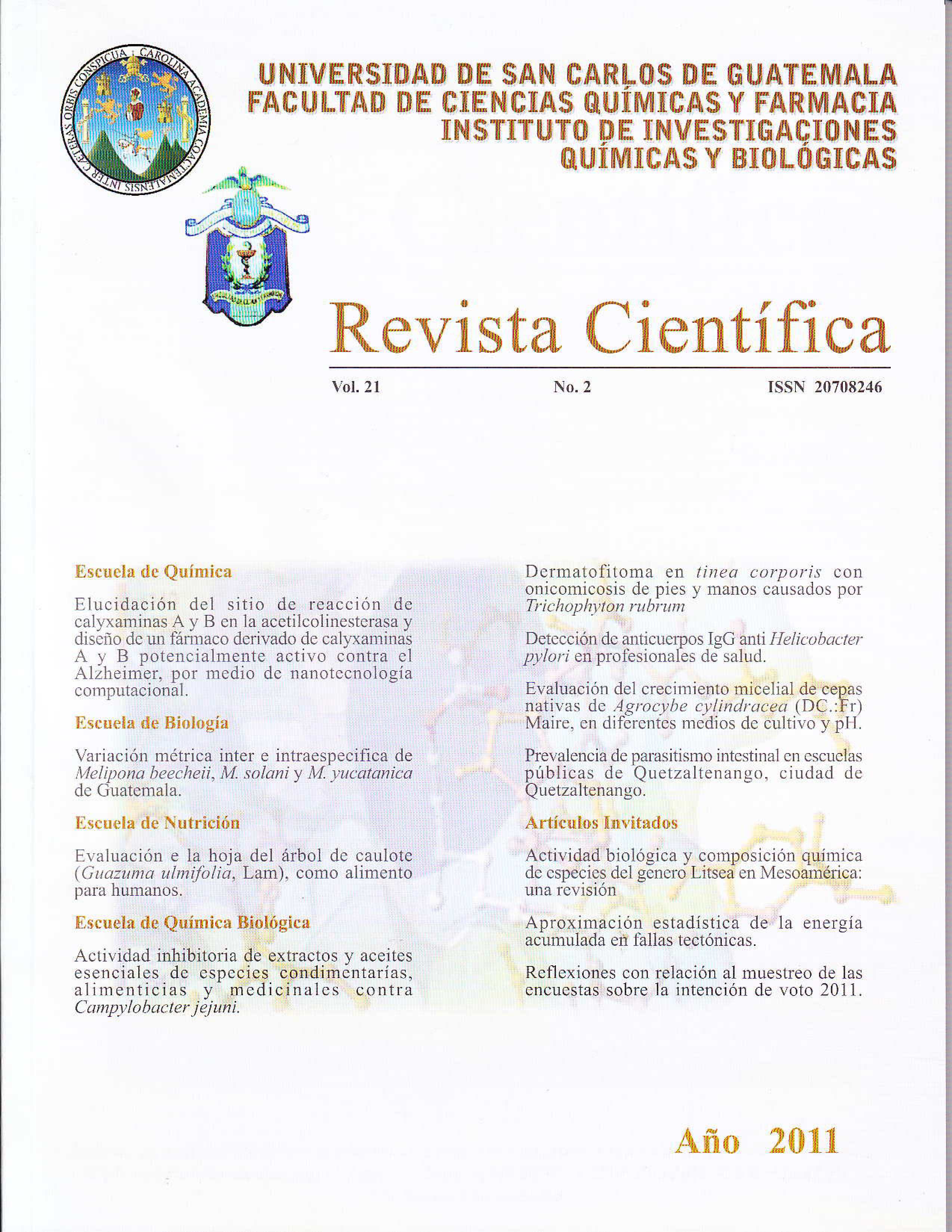Reflections regarding the sample of the surveys on the intention to vote 2011
DOI:
https://doi.org/10.54495/Rev.Cientifica.v21i2.137Keywords:
sampling, vote, accounts, reflectionsAbstract
When reviewing the surveys published in the media on the population's intention to vote before the general elections in our country, a series of statistical elements that should be a reason for analysis and reflection are striking. Especially when the surveys are publicly questioned about their reliability and that the media defend them with arguments that are unclear to the majority, with the indication that they were carried out in compliance with the most rigorous statistical standards. That is why in this article, some of the aspects related to opinion polls are analyzed to measure the intention to vote that were published prior to the General Elections of Guatemala held on September 11, 2011, so that the reader knows the statistical guidelines that should govern this type of research and form a criterion when interpreting them.
Downloads
References
Alonso, M. A. & Adell A. (201 1). Marketing político 2.0. Barcelona, España: Gestión 2000.
ESOMAR. (2009). ESOMAR/WAPOR guide to opinion polls and published surveys. Disponible en: http://www.esomar.org/uploads/professionalstandards/guidelincs/WAPOR-ESOMAR_Guidelincs.pdf. Fecha de acceso: octubre 01,2011.
Feres, J. C . & Medina F. (2001). Hacia un sistema integrado de encuestas de hogares en los países de America Latina. Santiago de Chile: Naciones Unidas. CEPAL.
Instituto Nacional de Estadística (INE). (2002). Guatemala: Revisión del diseño muestral de distintas encuestas de hogares. Programa para el mejoramiento de las encuestas y la medición de las condiciones de vida en America Latina y El Caribe. CEPAL, BTD . BIRF. Disponibleen: http: //www.ecl ac.el/d cype/mecovi/docs/TALLER10/25. pdf. Fecha de acceso: octubre 01 , 2011.
Instituto Nacional de Estadística (INE). (2006). Encuesta nacional de condiciones de vida -ENCOVI 2006-, diseño de la muestra. Guatemala: INE.
Instituto Nacional de Estadística y Censos de la República Argentina (1NDEC). (2001). Teoría y práctica del muestreo. 5o. curso regional del programa para el mejoramiento de las encuestas y la medición de las condiciones de vida en America Latina y El Caribe. CEPAL, BID, BIRF. Buenos Aires. Argentina.
Malhorta, NK. (2004). Investigación de mercados. 4a. Ed. México: Pearson Educación.
Medina, F. (2002). Determinación del tamaño de muestra en encuestas complejas de propósitos múltiplos. Programa para el mejoramiento de las encuestas y la medición de las condiciones de vida en America Latina y El Caribe. CEPAL. BID, BIRF. Disponibleen :
http://www.eclac.cl/deype/mecovi/docs/TALLER10/4.pdf. Fecha de acceso : octubre 01, 2011.
Mendenhall, W., Beaver, R. .1. & Beaver. B . M . (2005). Introducción a la probabilidad y estadística. 1 la. Ed. México: Thomson.
Pedret. R., Sagnicr, L & Camp, F. (2000). La investigación comercial como soporte del márketing. Bilbao , España : Ediciones Dcusto, S.A.
Rudnykh, S. I. (2005). Tamaño de muestra para poblaciones multinomialcs en muestreo bietápico. Dugandia, Ciencias Básicas , 1 (1), 52-58.
Downloads
Published
How to Cite
Issue
Section
License
Copyright (c) 2011 O. Nave Herrera

This work is licensed under a Creative Commons Attribution 4.0 International License.
Authors who publish with this journal agree to the following terms:
- Authors retain copyright and grant the journal right of first publication with the work simultaneously licensed under a Creative Commons Attribution License 4.0 that allows others to share the work with an acknowledgement of the work's authorship and initial publication in this journal.
- Authors are able to enter into separate, additional contractual arrangements for the non-exclusive distribution of the journal's published version of the work (e.g., post it to an institutional repository or publish it in a book), with an acknowledgement of its initial publication in this journal.
- Authors are permitted and encouraged to post their work online (e.g., in institutional repositories or on their website) prior to and during the submission process, as it can lead to productive exchanges, as well as earlier and greater citation of published work.









